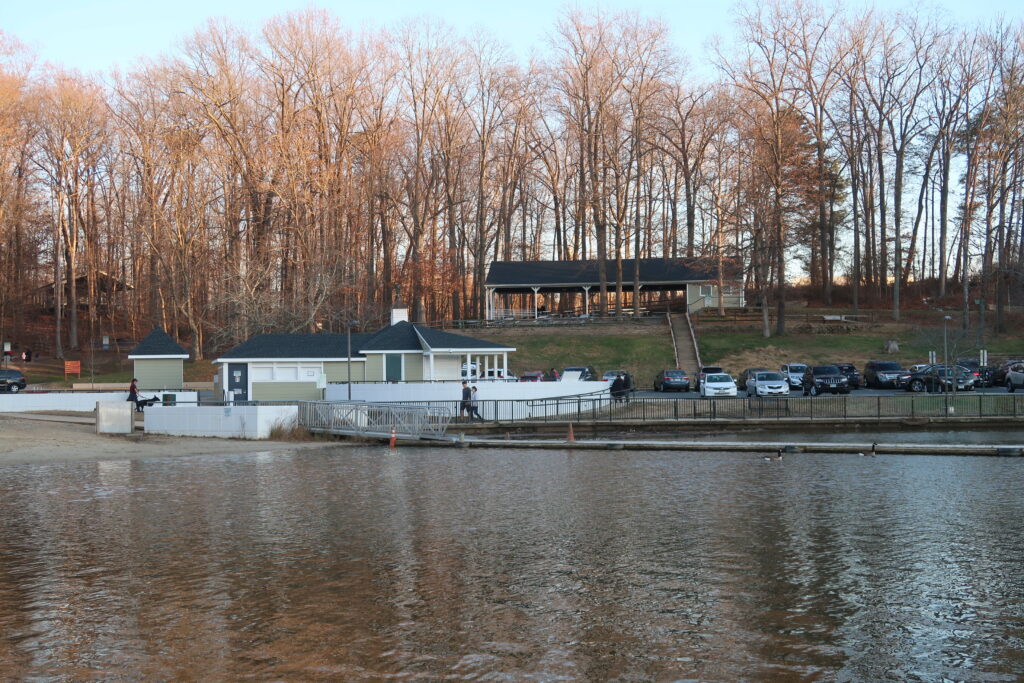Supervisors call for more studies on Lake Accotink

The Fairfax County Board of Supervisors on Jan. 23 approved a motion calling for additional studies on the preservation of Lake Accotink.
The Task Force on the Future of Lake Accotink presented its Findings Report to the board on Dec. 5. That report found that retaining the lake at a smaller size could be a viable option but more information on the sediment load and other issues is needed.
The Board Matter, presented by Braddock Supervisor James Walkinshaw, calls for the BoS to direct the county executive and the director of the Department of Public Works and Environmental Services (DPWES) to take the following actions:
- Conduct a feasibility study of the smaller lake option – a 20 to 40-acre lake four to eight feet deep – identified in the Findings Report.
- Conduct a study to measure sedimentation over a three-year period.
- In cooperation with the Park Authority, conduct an assessment of the Lake Accotink dam to determine the improvements and maintenance needed to ensure long-term regulatory compliance and safe functioning.
- Develop a robust community engagement plan informed by the task force’s findings.
- Repurpose an existing position or establish a new position within DPWES to coordinate work related to all of the activities associated with the Board Matter.
- Maintain the board’s commitment of $60.5 million to preserve Lake Accotink in the county’s 2025-29 Capital Improvement Program.
- Coordinate with the Park Authority to resume the Lake Accotink Park master planning process upon completion of the feasibility study and development of a long-term plan for preserving the lake.
- Ensure that the sedimentation rate study, assessment of the dam, community engagement plan, and feasibility proceed immediately and concurrently.
- Produce for the board by March 31, 2024, a timeline for completion of those actions.
The task force was formed to review previous studies and determine whether “all options were considered to preserve Lake Accotink in the most sustainable, equitable, and cost-effective manner,” Walkinshaw said.
Related story: Lake Accotink task force presents its findings to the BoS
“The task force found that a 20 to 40-acre lake would preserve much of the aesthetic and recreational value of Lake Accotink while minimizing maintenance costs and impacts on surrounding communities,” he said. “A smaller lake option could be paired with a managed wetland, grasslands, navigable kayak trails, and other creative recreational and educational amenities not currently available.” Currently, the size of the lake is 49 to 55 acres.
But the task force also found additional studies and analyses are needed.
For example, he said, despite multiple estimates dating back to 2016, we do not know with certainty how much sediment is entering Lake Accotink, how much sediment is settling in the lake, and how much sediment is flowing downstream from the lake. That information is necessary to determine how frequently maintenance dredging should be done.
Another key issue is the fact that Virginia’s dam safety regulations have changed. DPWES staff are working with the Virginia Department of Conservation and Recreation to determine the classification of the Lake Accotink dam and whether the new regulations will require improvements to the dam.
Related story: Immediate action urged to save Lake Accotink
The task force found that if an initial dredge of a small lake area were performed, the dredge spoils could remain in the park, most likely within the existing footprint of the lake.
Staff and the consultant working alongside the task force, however, pointed out that onsite re-use would require an extensive permitting process, Walkinshaw noted. And even if the spoils from an initial dredge could be re-used onsite, the spoils from future maintenance dredges would have to be deposited at another site.
While the cost to maintain a smaller lake would be significant, he said, it would be far less than the $395 million cost to maintain the full lake over the next 25 years.
A feasibility study is needed, Walkinshaw said, “to determine the best methods, costs, regulatory and permitting challenges, maintenance dredging intervals, permanent infrastructure needs, on-site re-use potential, implementation timelines, and staff needs to preserve a smaller lake.”
“Unless the feasibility study reveals unforeseen, insurmountable hurdles,” he said, “I believe we should proceed with the smaller lake option.”

If the lake was in or near McLane, I wonder if there would be the same effort to get rid of the lake vs. finding a way to save it. Does anyone know what is the new Mason Supervisor’s views/ position on the future of the lake?
Where is McLane? Do you mean Mclean?
Yes. Fat Fingers Small Keys